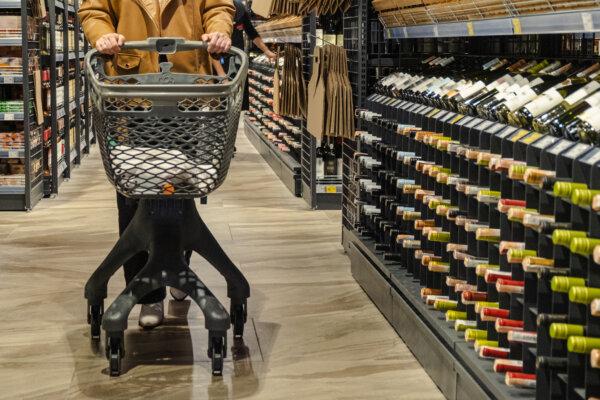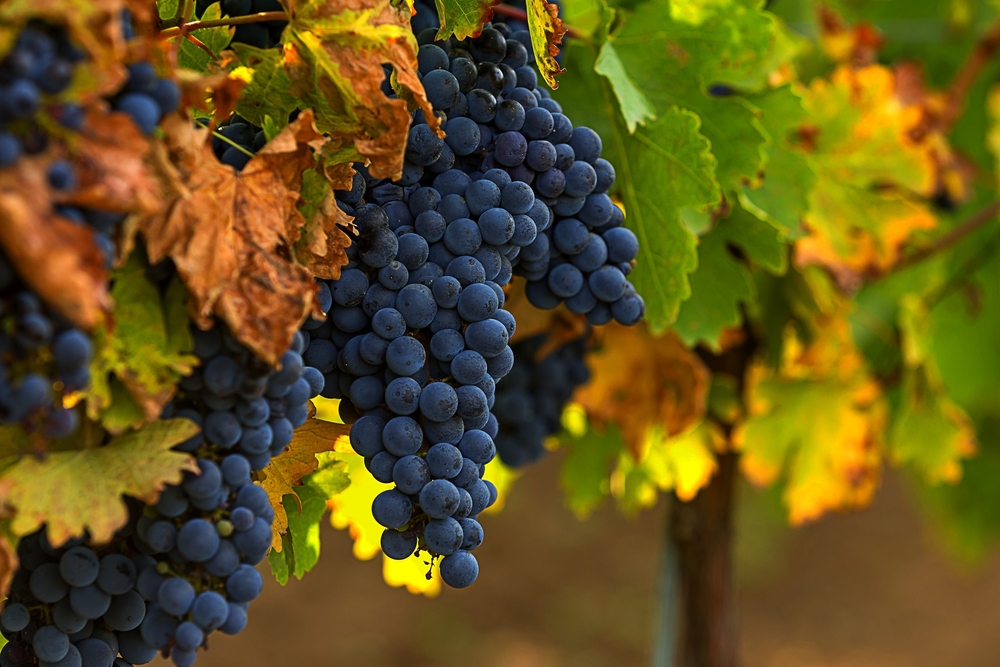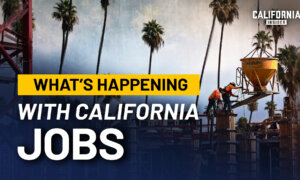Siyamak Khorrami:
Today, we’ll look into the world of wineries in California, what’s behind this slowdown and downturn in the state’s wine industry, and how it’s impacting everyone from farmers to winemakers. I’m Siyamak Khorrami. Welcome to California Insider
Stuart Spencer, Lodi wine growers
Siyamak Khorrami: Stuart, it’s great to have you on. Welcome.
Stuart Spencer: I’m happy to be here.
Siyamak Khorrami: We want to talk to you about the wine industry in California. You guys are hurting now, right? The industry isn’t doing well. Can you tell us what’s happening?
Stuart Spencer: It’s one of the most challenging times we’ve seen in the last 40 to 50 years in the California wine industry. Basically, there have been declining sales over the last two years, which is translating into backed-up inventory at wineries, reduced sales, and, then translates back to farms and growers, less demand for grapes. Let me back it up a bit. The California wine and grape industry experienced 30 years of positive growth until around 2018, when the market began to flatten out. Much of the earlier growth was driven by the baby boomer generation, which, in the early 90s, adopted wine as their alcoholic beverage of choice. The rise in wine consumption was largely due to reported health benefits related to moderate wine consumption and heart health. In 1991, a 60 Minutes story by Morley Safer highlighted the “French Paradox,” questioning why the French lived longer despite consuming high-fat foods, smoking, and drinking wine. And it was the correlation between the red wine consumption they had and their heart health. American started drinking wine like crazy in the 90’s. We saw this incredible decade growth through the 90’s
Today, baby boomers are aging, and health concerns are prompting many to drink less alcohol or stop altogether. Younger generations aren’t adopting wine at the same rate as older generations, leading to a slowdown in consumption. Multiple factors are at play here, including demographics and consumption patterns, as well as competition from global wine producers.
Siyamak Khorrami: Is it harder for California wine to compete?
Stuart Spencer: Well, California is probably one of the most expensive places to do business in the world. We’ve seen an acceleration of regulations and costs over the past decade that have really compromised and pinched the profit margins for California growers and vintners. Many businesses that operate in the ag sector, like we do. One of the challenges; when you’re a farmer, you can’t pick up your business and move to a place that is cheaper to do business . So you are stuck with where your land is, and it’s important to take care of your land. When you can’t sell your grapes, we saw this last year, there were an estimated 400,000 tons of grapes left on the vine in 2023, many of those vineyards were just abandoned, and we have those in our area throughout California, where the vineyards are still sitting there. They were never harvested and never pruned.
Siyamak Khorrami: So it had grapes. People just give up?
Stuart Spencer: They gave up. They couldn’t sell them. They didn’t have the money to tear them out, and redevelop them to another product or commodity. One of the bigger challenges we are facing in all of California agriculture is, most california agriculture is struggling right now, there aren’t enough crops to switch into. And so, if you were to pull out your vineyard, the next question is, what do I go into? Many of our farmers are struggling with those questions today, and we have more farms up for sale now because you’ve got a generation of growers that are just like, “I’m done. I can’t go back to the bank and borrow more money to develop a new crop when the outlook is not very good.”
Siyamak Khorrami: And why do you think this happened? Do you think there’s also a lot of competition?
Stuart Spencer: So there are several factors at play here. I think, you know, there are the demand effects that we just talked about with slowing consumption—that’s part of it. I think the bigger part is the competition from imports. One of the big changes we’ve seen in California is that our largest grape buyers, our largest wineries, have shifted a portion of their production to sourcing cheap overseas bulk wine. Millions and millions of gallons are pouring into California from all over the world: Australia, Chile, Southern Europe. It’s undercutting California grape growers. In the last five years, I was looking at my estimates before I came on here—there have been 1.3 billion bottles of bulk wine imported. What this is doing is pulling out the bottom end of the market for California grape growers, so there’s no outlet for them. At the end of the day, you’re just left with the grapes on the vine, and you’re going to go out of business real quick that way.

French oak barrels ferment wine at Castello di Amorosa in Calistoga, Calif., on July 30, 2022. (Cynthia Cai/NTD Television)
Siyamak Khorrami: Is this the first time you’ve seen something like this?
Stuart Spencer: So this practice began back around 2004. You can trace it to a federal policy that was put in place, which complicates the story even more. There’s a trade regulation called duty drawback, which basically subsidizes imported wine. They’re able to bring in a lot of this cheap imported wine tax-free, so it’s not paying alcohol taxes or it’s getting its alcohol taxes refunded. This has created an incentive for the biggest California wineries to import cheap wine. The trick is, they have to find a matching export. But the problem is that it’s going to a few of the large buyers that control the grape market, and it’s leaving a lot of producers without a good home. That began around 2004, and we’ve seen a steady growth of cheap imports coming into the United States. We’ve seen California wine lose about 15% of its market share over the last 20 years in the U.S. market. So there is a lot of competition, and you couple that with the cost of production here—we can only lower our prices so much in order to be sustainable and survive.
Siyamak Khorrami: Now you mentioned that people had these grapes on and they didn’t want to pick them, right? How much of it was there?
Stuart Spencer: Yes, that’s correct. Well it’s hard to say. Some of the industry experts estimated last year there were 400,000 tons that were unpicked, and left on vine. Equivalent 50 to 60 thousands of acres. I don’t think I’ve ever seen it as bad as it is right now. I’ve spoken with some of our older growers that’ve been farming for 60, 70 years in some cases. They say this is the worst they’ve ever seen. Large wine companies always come to at least offer some money for their grapes to keep them alive, to keep them surviving. Right now, there are a lot of grapes they spend all these years farming in, and they have no place to go with them.
Siyamak Khorrami: So the cost of picking them is higher than what they can probably get?
Stuart Spencer: In some cases, there’s some wineries coming in with very low-ball offers, low pricing, and so the cost of picking is greater than the cost of revenue they would get from them. And in other cases, there’s just no buyers completely. And so they’re just sitting on the vine, waiting and hoping that somebody will be able to come along and help them out and take the grapes. But it’s not looking great for some of the varieties and some of the growers. We’ve done a great job of building global recognition for California wine. It is high quality, incredible diversity, really great flavors and potential, but we’re competing in a global marketplace, and one of the big challenges too is that we’re competing against the traditional European wine regions that they subsidize their farming and they subsidize their wine grape production. It’s really interwoven into culture in these countries, and so when their farmers struggle, the EU steps in and helps them out. And right now, across Europe, we’re seeing what they call crisis distillation, which is the government going in and buying up excess supplies from the growers, so they’re getting some money for it and then distilling that into alcohol, which is used for industrial purposes and other purposes like that. The problem with this type of subsidy is it keeps that production in the ground and doesn’t allow the market forces to correct itself and balance out.
Siyamak Khorrami: Next year, they will come back. There might be excessive supply, right?
Stuart Spencer: And another challenge we’ve got is that the United States market is the number one market for volume value in the world. So everyone wants to compete here; everyone wants a piece of market share. And the really frustrating thing for the California farms is that the largest grape buyers and largest vineyards are helping them by going overseas, buying cheap wines that undercut California producers. And the story’s getting even worse and more complicated. Because a lot of the bulk wine that comes in shows up on products and grocery stores are labeled as American. The federal regulation allows you to blend in up to 25 percent foreign wine, and is still called American wine. Many consumers who really want to support American producers may not even know that they are buying a foreign sourced wine.
Siyamak Khorrami: How much is it?
Stuart Spencer: Up to 25%, it can still carry the American appellation.
Siyamak Khorrami: Even if it has 25% foreign grapes?
Stuart Spencer: Yes. One of the other frustrating things for me is I walk into our local supermarkets, and you'll see floor stacks of this foreign wine sitting there. And you know, our growers are struggling to sell their grapes, and our grocery stores, right in Lodi, right here in California, have all this foreign wine in it. You can’t even seem to get them to answer the phone and address these questions and support their local farmers and their local businesses. One of the big pushes for me, and you know why I’ve come out and started talking about this, is that I think we talk a lot in California about sustainability. We talk a lot about environmental and social policies. At the end of the day, the foundational values of that are based on community and supporting your community. If your community is struggling, then everybody’s struggling. Investing in your community is more than just sponsoring the local softball or baseball team. It really means investing in your community. And when our largest vintners, largest wineries, are going overseas and buying cheap wine instead of buying it from the local growers, they’re not investing in their local communities the way they really should be. And if we are going to thrive here in California, we need to really have a community-first approach to things and really support our local economies and support our local communities. That effort and those values then trickle down throughout the whole economy and lift everyone up. You know, we’re based in the Central Valley, and we have chronically higher unemployment than other parts of California, and these business practices are taking away jobs.

Woman with a trolley makes purchases in a supermarket (Freepik/EugenePetrunin)
Siyamak Khorrami: People that are going to do the picking, they don’t have the job?
Stuart Spencer: They are going to do the picking, the tractor driving, the paperwork. The whole supply chain is being affected by this—the fertilizer companies that support us, the trucking companies that haul the grapes—everyone is being impacted by this.
Siyamak Khorrami: Now, does it have a higher profit margin if they go that direction? The way they are doing it internationally—is that what’s happening?
Stuart Spencer: I mean, at the end of the day, it’s a profit-driven motive because they can source grapes or bulk wine cheaper overseas and bring it in. That may make initial business sense, but if it puts your local community out of business, it doesn’t make long-term success, because there’s no guarantee that excess supply is going to be available down the road. The other thing it does too—and it’s hard to correlate this exactly—but, you know, when your competitors are bringing in cheap wine and lowering the price, then you have to do the same too. So it’s creating almost a race to the bottom at the value end of the wine market. That’s taking away the profits for everybody, and so it’s pushing volume instead of profitability. More is not always better, but if we can, you know, produce less wine but sell at higher-quality price points, I think we'll all be more successful. And that’s kind of the play we need to get, but it’s a challenge when we’re competing with all these other factors, and you’re competing in a market that has really slowed down. The other important thing to understand in the wine market too is we’re still working through the pandemic. So people overbought, the consumers overbought during the pandemic, the retailers kind of overbought, and the distributors did. So there’s a lot of excess inventory in the system right now that has led to decreased, you know, year-after-year negative sales the last two years. And so a lot of producers are kind of panicking a little bit about that because if they shipped 10,000 cases last year, and all of a sudden, their sales were on track for 7,500 cases, but they were projecting to sell 12,000 cases, you’ve got 5,000 cases of excess supply that you have to figure out how you’re going to deal with. And the wine business is very much a capital-intensive business, so it requires you to invest a lot upfront. The other part of this too, which is the tourism part of California too—tourism in California has been struggling, and a lot of direct-to-consumer wine sales are driven by visitation. We’ve been doing a little bit better in Lodi than some of the other parts of California. We’re still a discovery place, and our price points are a little more accessible and approachable, but everybody’s feeling that pinch right now as their costs have come up quite a bit. So as your costs are coming up and your sales are going down, you know, the profits are being stripped from the industry, and you don’t have the money to reinvest. You don’t have the money to hire new employees. As a small business owner, you have to be very cautious in how you move forward.
Siyamak Khorrami: I’m sure you guys have been talking about how to fix this. So what are your thoughts on this?
Stuart Spencer: Well, I think the first fix we need is for Congress to fix this loophole that allows foreign wine to come in with a subsidy and not pay their alcohol taxes. That’s the first solution. The second solution is we need to refocus our efforts on supporting our communities and really embrace the sustainable values that are the foundation of the California industry. I think the third option is at the consumer level, and this is where you come into play. This is where, you know, everyone that enjoys wine comes into play. When you go into your grocery store, look at the label and see where it comes from. Ask your retailers and ask your restaurants—you should be sourcing California wine. We want to see California wine here. We need to see American-made wine, 100% American-made wine. And I think if we can get consumers to think about that, it can make a difference. I think that is foundational to moving and changing our situation.
Siyamak Khorrami: As we are getting more information, we’re seeing that there are a lot of families involved in the farming. Can you tell us?
Stuart Spencer: Yeah, so I grew up in the wine and grape business. When I was two months old, my parents purchased a piece of property, and they were told grapes would grow well on it. They didn’t know anything about wine, so they planted grapes. My dad grew up farming. We celebrated our 50th harvest this year. The first crop came into ripeness in 1974, and over those 50 years, I was always good, free labor. So, I grew up working in the vineyards. When my mom and dad started our winery back in 1981, I was free labor in the winery. I really learned this industry from the ground up. Over the years, we’ve probably faced every problem that can happen, and we’ve worked our way through it. Years ago, my dad got into making wine because he had a winery file bankruptcy on him one year, and the previous year, a winery had broken the contract right before harvest, and he was left trying to figure out how to sell the grapes. He said, “I’m just going to make wine and sell wine. At least then I have more control over my destiny,” and that’s how we got into making wine and selling wine. It hasn’t been easy, I will say, but we’re still here today. California has its challenges, but I’m not going anywhere, and I want to help make it better, and we need everyone else’s help to do that too.
Siyamak Khorrami: You mentioned there is a sense of community in farming. How does it work?
Stuart Spencer: When we moved our winery to Lodi, actually, you know, our own vineyard was dying, and we were without grapes, and we actually didn’t have a lot of money. We had growers give us grapes, and we said, “We can’t pay for them.” And they said, “Don’t worry about that. When you have money, you pay for them.” To this day, we continue to work with those growers, and it’s been almost a 30-year partnership. You know, they take some wine from us, we take some grapes from them, and then we settle the bill at the end of the season and work it out. There’s no written contract, you know; it’s all done on a handshake. That’s why farming is important to California. These values extend out into the broader community. We need our agricultural community to thrive in California because when the agricultural community thrives, the communities around it thrive too. I’m not quite sure what our future is going to look like, but one thing I know is that farmers are resilient people, and we are going to find a way to succeed. We’re going to have to work twice as hard, but we’re going to continue working at it and pushing forward to make it successful.
Siyamak Khorrami: Stuart Spencer with Lodi Growers, it was great to have you on California Insider.
Stuart Spencer: Thank you for having me.
THE RISE OF CALIFORNIA WINE
Patrick Cappiello, California winemaker
Siyamak Khorrami: Patrick, it’s great to have you on. Welcome.
Patrick Cappiello: Thank you for having me.
Siyamak Khorrami: You’re a wine expert, right? Is there anything special about California wine?
Patrick Cappiello: California is so unique. Yeah, it’s the biggest wine-producing state in our country. It’s ideally kind of a perfect climate for grape growing. We have a lot of sunshine, warm days, and very cool nights, especially in the coastal parts of California. We grow grapes all the way from the border of Oregon to essentially the border of Mexico. It’s a very unique climate with a lot of varying soil types. There’s sandy alluvial soils, limestone, granite—so many things that exist in other wine regions all over the world, but to have them in such close proximity is very unique. The wines being produced in California started before Prohibition. Prohibition obviously threw a wrench in the works for California wine, but post-Prohibition, people like Robert Mondavi and Charles Krug, who loved European wine, started to look at this area in California as a perfect situation to make wine. And so, we grew as a state and as a producer of wine. We always kind of played second fiddle to the wines of Europe—the wines of France, Italy, and Spain.
As time went on, there were moments in wine that changed things for California. A British sommelier named Steven Spurrier, who lived in Paris, came to California because he'd heard amazing things about the wines from this area. He visited wineries in Napa Valley, brought bottles back to France and Paris, where his wine shop was, and did a blind tasting against the great wines of Europe in 1976. The wines from California defeated the European wines in this blind tasting, which kind of put California on the map. Then, there was the rise of wine critics like Robert Parker, who also really shined a spotlight on California and the wines from the area. There was also a book written by Jon Bonné called The New California, which was about producers doing things differently. So, there were moments that continued to elevate California.
But even during those high times, there was always this feeling that California wine was good but not as good as European wine. Now, we’re in a moment where wine consumption across the world is declining, and in our country, people are drinking less wine. The problem is that we already have a great amount of wine coming from other places into this country for consumption. As we reduce the amount of wine we’re drinking, California wine is suffering more because there’s this feeling that California wine, A, is not as good as European wine—even after all these moments I just mentioned that proved we produce world-class wines—and B, California wines are looked at as more expensive than their European counterparts. There are many reasons for that, and I could go into them. There’s also been a lot of untrue reports that focus on a certain dynamic of farming here, where pesticides like Roundup are being put into the ground. But these reports don’t reflect the fact that a huge number of farmers are farming organically and not using these pesticides. A blanketed statement has been made that California wines contain these chemicals, which is untrue—not all California wine does, and it’s not true that all European wines don’t. But this has been broadcasted, which has affected California wine sales.
In Europe, agriculture for grapes is subsidized because it’s considered an important part of the economy, and they export a lot of wine. There’s no subsidy for our farmers who grow grapes because it’s not looked at as an important agricultural product. The main thing we subsidize is corn. So, we’re also dealing with that.

At Tablas Creek Vineyard in Paso Robles, California, guests enjoy tastings of Rhone-style wines. (Courtesy of Athena Lucero)
Siyamak Khorrami:A lot of people consume wine as more of a family gathering with friends. It’s not really a party drink, right?
Patrick Cappiello: Yeah, I think every form of alcohol can be abused. It is a chemical and can be dangerous if not consumed appropriately. A friend of mine, another sommelier-turned-winemaker named Richard Betts, used to say that in Europe, wine is a grocery. It’s part of sitting at the table and the family meal. There isn’t even a drinking age per se in Europe, and at some point, kids are shown wine as part of a meal, to drink responsibly. In the realm of alcohol, it has a different cultural reference than other forms of alcohol.
Siyamak Khorrami: If you were to promote California wine to our audience, how would you promote it?
Patrick Cappiello: This is the most amazing time for California wine. Never has there been a more diverse group of people making wine and farming grapes in the state than there is right now. There’s never been a bigger emphasis on farming responsibly with organic and biodynamic practices. There’s never been a moment when people are more focused on healthy practices in the winery itself, using natural ferments and making wine naturally. This has never happened before. We are not only producing some of the best wines we ever have, but we’re also trying to focus on being environmentally friendly in the way we produce wine. If people don’t respond to this by supporting us, we might regress to something that wasn’t as responsible. Right now, the greater wine community in California is feeling a decompression in sales. There are many factors, and people want to identify why it’s happening. The why is compelling, and I think it’s important to identify, but a lot of times, the why isn’t something we can change. We’re in a moment where many of us are producing less wine because we’re afraid of overproducing since COVID and the lockdown when people were drinking more at home.

Wine is going on sale as demand is falling. Andrii Zastrozhnov/Shutterstock.
The problem is that winemaking has a long turnaround. If I want something on the market based on what I’m farming now, I need to plan for it a year to a year and a half from now. We all produced at a certain level because we thought there would be consistent demand, but things changed, and now we’re left with a glut of inventory. We have wine in our cellars that we thought would have sold by now, and it hasn’t. So, the reaction is to stop producing as much, but winemaking doesn’t work like that—it’s seasonal. We can’t just stop the process. This affects our farmers, who now have unsold grapes on the vine. They must decide whether to keep going or walk away.
Siyamak Khorrami: You were telling us that grape growers are actually giving away their grapes. Can you tell us what’s happening?
Patrick Cappiello: We’re at the mid-to-end portion of harvest, and farmers who usually had commitments for grapes this year don’t. They’ve reached out to people, hoping for a solution, but many are now just giving away grapes. Some vineyards that used to cost $5,000 to $6,000 per ton are now just free if you come to pick them. Farmers have to decide whether to bet that things will get better and sell grapes next year or rip up their vineyards and plant something else. Unfortunately, many are walking away from grape farming and starting to produce things like nuts. This could lead to a future where, when demand rises again, there aren’t enough grapes, which will drive up the price of wine. It’s a dangerous moment, and if we don’t address it now, we’ll be in an even worse situation in a few years.
Siyamak Khorrami: Patrick Cappiello, California winemaker, it was great to have you on California Insider.
Patrick Cappiello: It was great to be here.
GRAPE GROWERS MOVING FORWARD
Craig Ledbetter, vice president of Vino Farms.
Siyamak Khorrami: Thank you, Craig. It’s great to have you on. Welcome.
Craig Ledbetter: Thank you. I appreciate it.
Siyamak Khorrami:You’re a California grape grower, and we’re hearing that California grape growers are struggling at this time. Can you tell us what’s happening?
Craig Ledbetter:
Grapes are a permanent crop. You don’t have to replant them every year. You plant a vineyard, it takes three years for it to come into production, and then your goal is for that to be in the ground for 20 to 25 years. There are a lot of vineyards that are 20 to 25 years old that need to be redeveloped anyway. And so, if we start moving forward with removal and we have other opportunities to plant other crops, then we absolutely should do that. Going back and trying to do something, like redeveloping it right back to a vineyard, when it’s already been proven to us that wine sales are tapering off and people are consuming less alcohol in general—that would be silly on our part as growers to move in that direction.
Siyamak Khorrami: We’ve been hearing that there is a new trend with younger people wanting healthier products, and they’re not drinking as much alcohol. Is this a concern for you guys?
Craig Ledbetter: No, I mean, this slowdown in consumption isn’t just about the United States of America. This is a worldwide situation, and we are in a worldwide oversupply of fruit, wine, and grapes. This isn’t something that can just be taken care of by growers in California. This has to be looked at on a grander scale, across the world. You have the southern hemisphere, especially in South America, where you have a lot of grapes planted. They’re able to farm at a much lower cost of farming per acre—or for them, a hectare—than it is for us to farm that same acreage here. So, they’re able to produce quality fruit at a lower price, which clearly is enticing to the rest of the world. It fits the bottle price point that a lot of buyers are interested in. And that’s—that’s something that isn’t new. It’s something our industry has been dealing with for a long time. It’s been a worldwide market since the late ‘90s. We’re not just competing with ourselves; we’re competing with European countries, Australia, and South American countries as well. So yes, this is an overall worldwide issue that has to get corrected. And there are too many smart people in our industry for this not to get corrected.
Siyamak Khorrami: Are you telling us that California growers are not able to compete with international growers in other regions?
Craig Ledbetter: When you look at the quality of fruit, which in turn affects the quality of the wine—you can’t make good wine out of bad grapes. You can make bad wine out of good grapes, but you definitely can’t make good wine out of bad grapes. So, what we’re trying to do in California is always make the highest quality of wine from the grapes that we have. Regionally, that can be different. It’s not throwing anyone under the bus, but the quality in Fresno and Bakersfield is not the quality you get in Lodi, Paso Robles, Monterey County, Mendocino County, Sonoma, and Napa. The areas of replacement by these other countries really revolve around the Fresno-Bakersfield valley, and now we’re starting to see that attack on Lodi fruit as well, where they are able to provide quality at a lower price than we can for the same quality in Lodi. This has everything to do with the regulations we have in California, our labor laws, and the continued increase in minimum wage. When you think about that—how that relates to what we’re doing in the field—what we are paying in an hour, South American countries may be paying their employee in a day. So, when you start leveling out that playing field, it’s not very level at all. So, of course, they can produce at a lower price than we can. One of the issues that I think a lot of us have in the industry, and it’s not an issue but an observation, is that we hear people talking about wanting to know where their wine and food are coming from. If you need to know where your food or wine is coming from, and you want it to come from where you live, it’s going to cost more money. If you’re interested in buying based on price alone, you’re not going to be buying American products for the most part. You’re not going to be able to buy American food or wine because we can’t compete on price in the global market with countries like South America, where labor is cheaper, or Europe, where they are partially subsidized by their governments. So, we’re trying to figure out how to equalize that playing field for California growers, winemakers, and wine brands to continue to compete.

As with wine, you can find some amazing olive oil coming out of California if you know where to look. Gary Saxe/Shutterstock.
Siyamak Khorrami: Is it common for American winemakers to use international grapes and foreign grapes?
Craig Ledbetter: Well, that’s a marketing trick that a lot of these wineries have really honed in on. They might have foreign wine in an American-appellated bottle of wine. And I know that sounds odd because if it says “America” on the bottle, you'd think all of that wine or fruit would be from the United States. But in our country, you can put an American appellation on the wine, and 25% of that wine or fruit can be from another country. We’re the only country on Earth that allows that. If it’s a French bottle of wine, guess what? It’s 100% French. So, that’s something we have to deal with. That could be a double-edged sword. American wineries might just say, “Well, our consumer may or may not care whether it’s an American product or not, as long as it’s at the price point they want.” So, when you’re at a grocery store looking at the wine section, which can be daunting because of the number of SKUs, you look at the shelf and see 17 bottles of Cabernet priced basically the same, but with slightly different labels. One might say California, one might say American, and one might not say anything. But when you turn it to the back, it says “Product of Chile” or “Product of Argentina” or “Product of Italy,” and you wouldn’t know that unless you turned the back label. That’s something we’re going to continue to deal with, as long as growers face pressures on how much we can farm and at what price. If we can’t farm it at the price that meets the bottle price point, then they’re going to replace us with foreign fruit. That’s basically what it boils down to.
Siyamak Khorrami: Craig, are farmers like you reconsidering growing grapes in California?
Craig Ledbetter: Well, I mean, farming is our livelihood. It’s what we’ve done. I’m a fourth-generation California farmer. I am third generation in this particular business of farming wine grapes. Prior to farming wine grapes, my grandfather farmed. My dad grew up on a farm in Delano, where they farmed row crops, strawberries, cotton, all kinds of fruits and vegetables, as well as some oranges. Then my grandfather moved down to Southern California, where he farmed avocados and citrus, and then he eventually, after that, moved to the Visalia area, where he farmed walnuts. All of this was prior to 1972 when he landed in Lodi, and we started farming wine grapes. So since 1972, my family has been a wine grape grower. We have recently ventured again outside of the wine grape industry in the Lodi area and have planted some pistachios. Those pistachios will come to production in 2025, and we have intentions of planting more pistachios in 2025. We are looking at it region by region, where we farm, and if there are other opportunities to farm something besides wine grapes, we’re going to evaluate those and see if that’s something that we can be successful with. Pistachios are the one that we’ve kind of honed in on for now, and we will continue to do that.
But all in all, it’s my family’s livelihood. It’s what we know; it’s the only thing that I know. My dad knows he’s farmed other things because he grew up on a farm in Delano, but it’s what my family knows. In my generation, there are five of us who work for the family business—myself, my sister, and three cousins as well. We all work together hand in hand throughout the state of California. So, yes, it’s, you know, farming is our livelihood. It’s something that, you know, we hope to pass to the next generation, but we’re going to have to see some changes in farming in California if that is going to determine if that’s going to be possible. In general, we love what we do, and we’re stewards of the land. We take care of our land, you know, and we have every interest in preserving that land for our lifetime, my children’s lifetime, and hopefully my grandchildren’s lifetime, who are not in existence yet. But, yeah, there is so much going on in this wine industry right now that has to be figured out, and how we figure that out.
The main thing that I think we as grape growers and winemakers, especially on the small winemaking side, is we are looking for our consumer to think California, to think American. We are thinking about our consumer to do what they preach—to follow in what they say and what they’re talking about. What we hear all the time is we need to know what we’re drinking, we need to know what we’re eating, and we need to know where it’s coming from. They want local. And if you want local and you want to know what you’re drinking and you want to know what you’re eating, the best way to do that is to buy Californian, especially if you’re in California, buy American wine, buy American food. When you go to the grocery store and you see this as a product of Mexico, or this is a product of Chile, or this is a product of Argentina, when it comes to your fresh produce, you need to think about that.
Why is that? Because that’s not where our food used to come from. Our food has always been homegrown, and I think it’s very important that we look at farming in the United States of America as the backbone of our country. It’s really how our country was started. It was started by family farmers because you had to farm to survive. That was the way you ate. We have gotten away from that, and I understand that that’s going to happen over time, but if our food starts coming from other countries, we are no longer the country that we once were because now we are reliant on other countries to provide us with a vital part of life, which is food.
You know, in the wine industry, we’ve always been traditionalists. We’ve relied on tradition to sell our product. We have younger generations that aren’t as loyal to tradition as the older generations were. You know, especially when you start talking about the boomers and the Gen X generation. You know they are loyal. You look at the millennial generation and our youngest wine-drinking generation, the Z generation, or the I generation, whatever you want to refer to them as, not quite as loyal, especially the millennial generation. They are not as loyal to products as the previous generations before them. I’m hoping that as that generation continues to age and their families continue to grow, that loyalty comes back as they get older.

This is a summer salad that you can put your own signature on—so have fun with it. Courtesy of California Wine Institute/TNS.
You know, the early look at the Z generation is that they are loyal, but they are very, very consumed in life by health. You know, there are studies out there now that are saying alcohol is bad for you. Well, I’m of the opinion that everything that you do, if it’s not in moderation, is probably not good for you. Look, my family’s not scared of this. We are a partner in a brand, a new wine brand that we do believe is something that speaks to that generation of health. I'll change my hat so you can see it. We’re involved in a wine brand by the name of Avivo. It is a brand where we are farming. We are using regenerative farming practices, certified organic, and their lower alcohol wines because they’re being picked at less ripeness, lower Brix, which is the sugar content in the wine. So you make a lower alcohol wine. For us, that speaks to the health side of what we’re doing. We’re treating our ground better. We’re treating the fruit better. Also, the employees that are involved in the farming of those grapes are no longer spraying pesticides. They’re spraying products that aren’t harmful to them, their body, or the environment. So all of those things that are happening in our industry are leading us, hopefully down a path that allows us to market to the next generation that is much more worried about the healthy lifestyle of living and what alcohol means in that world. And so we’re hoping that that’s something that we can move forward with, hang our hat on, and continue doing what we do.
Siyamak Khorrami: Craig Ledbetter, fourth-generation California farmer, it was great to have you on California Insider.
Craig Ledbetter: Thank you.











